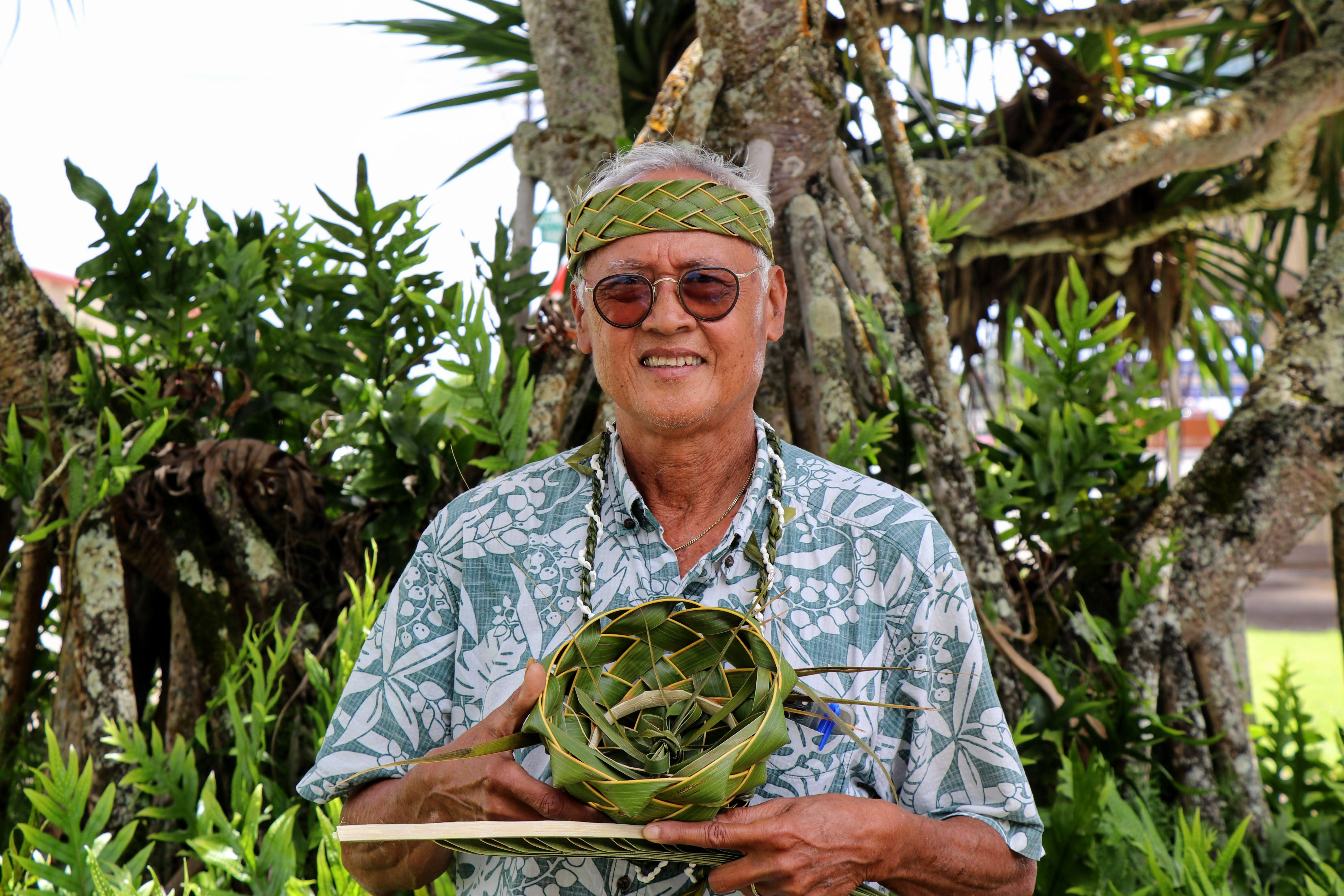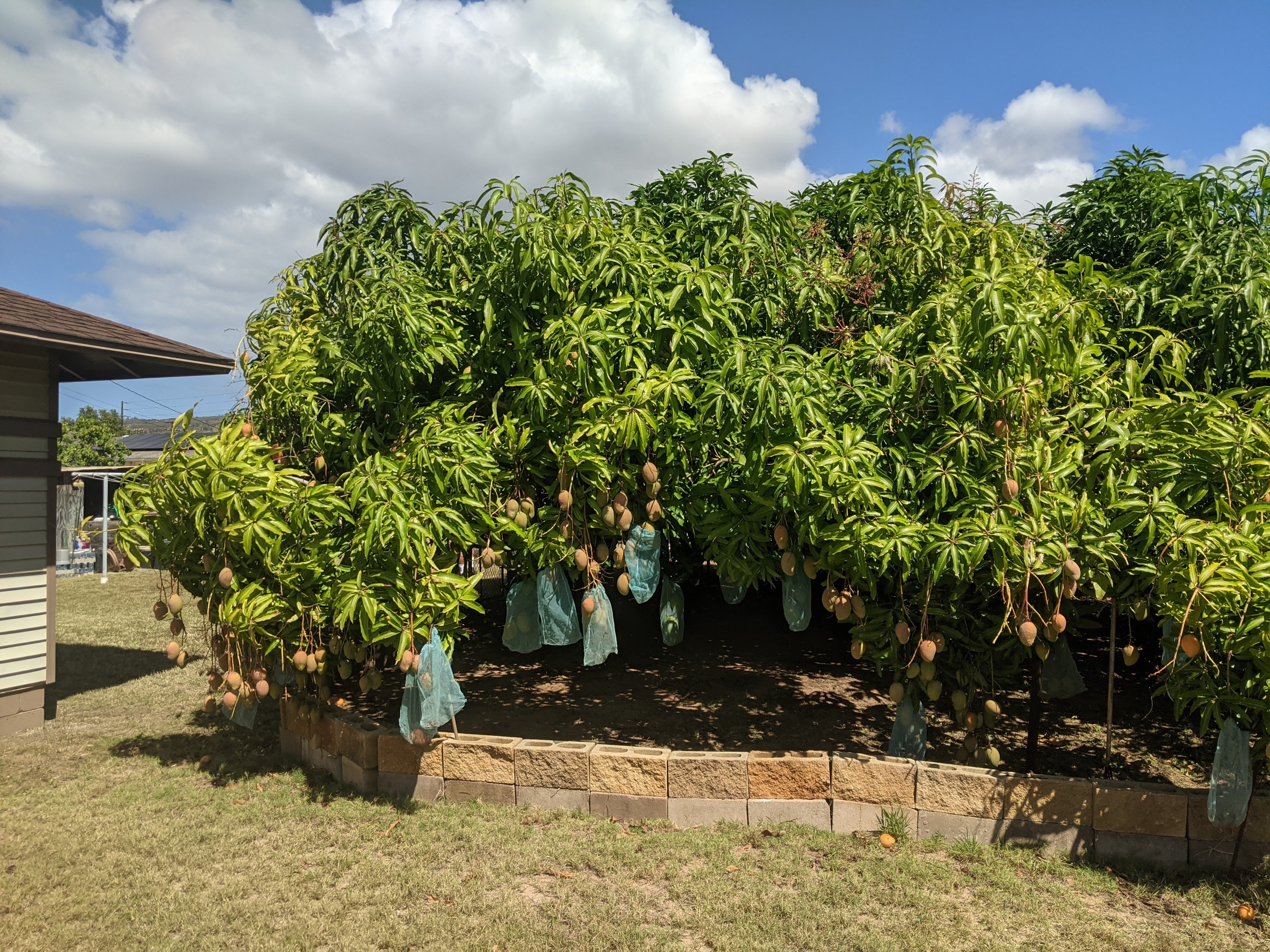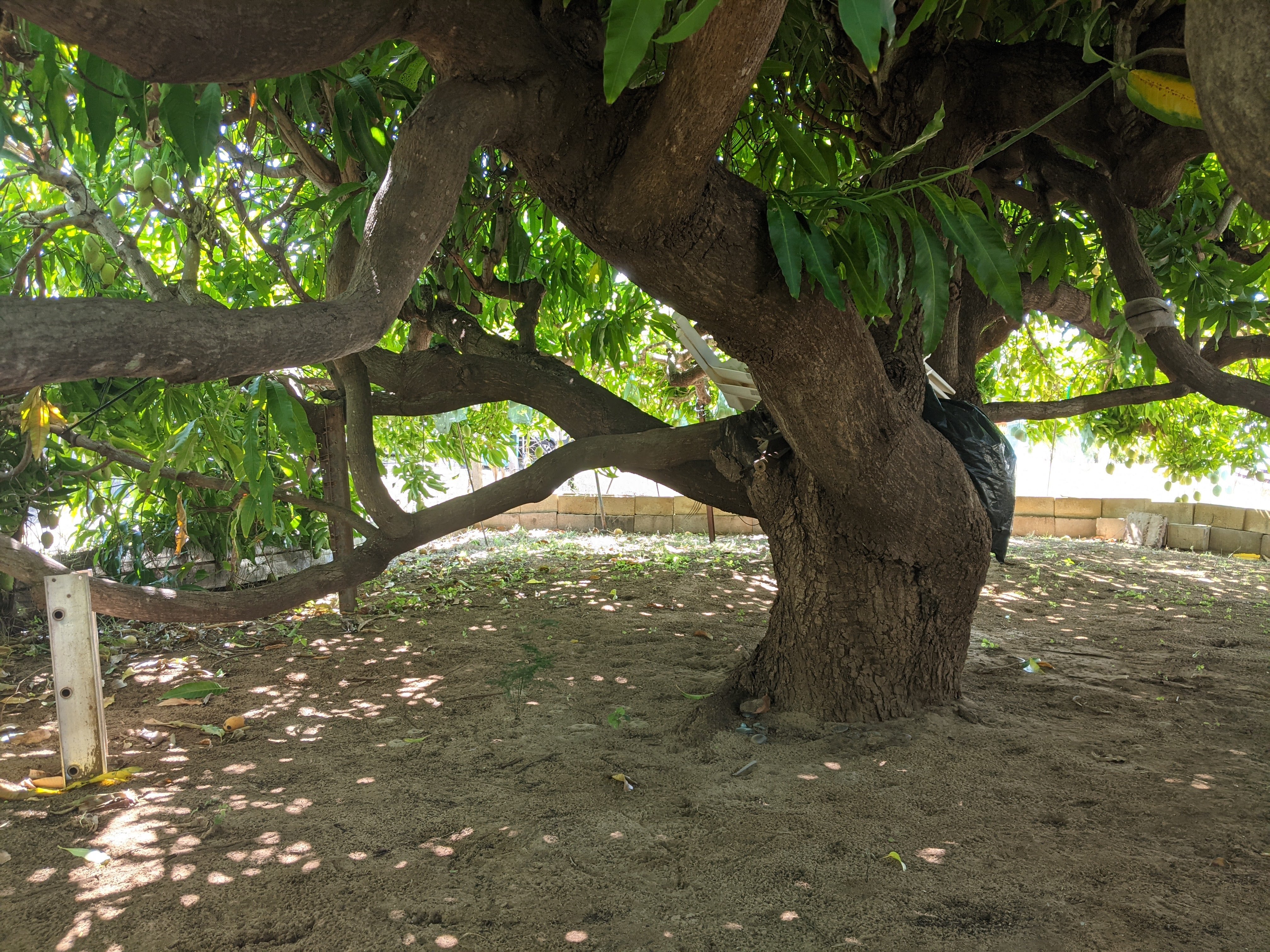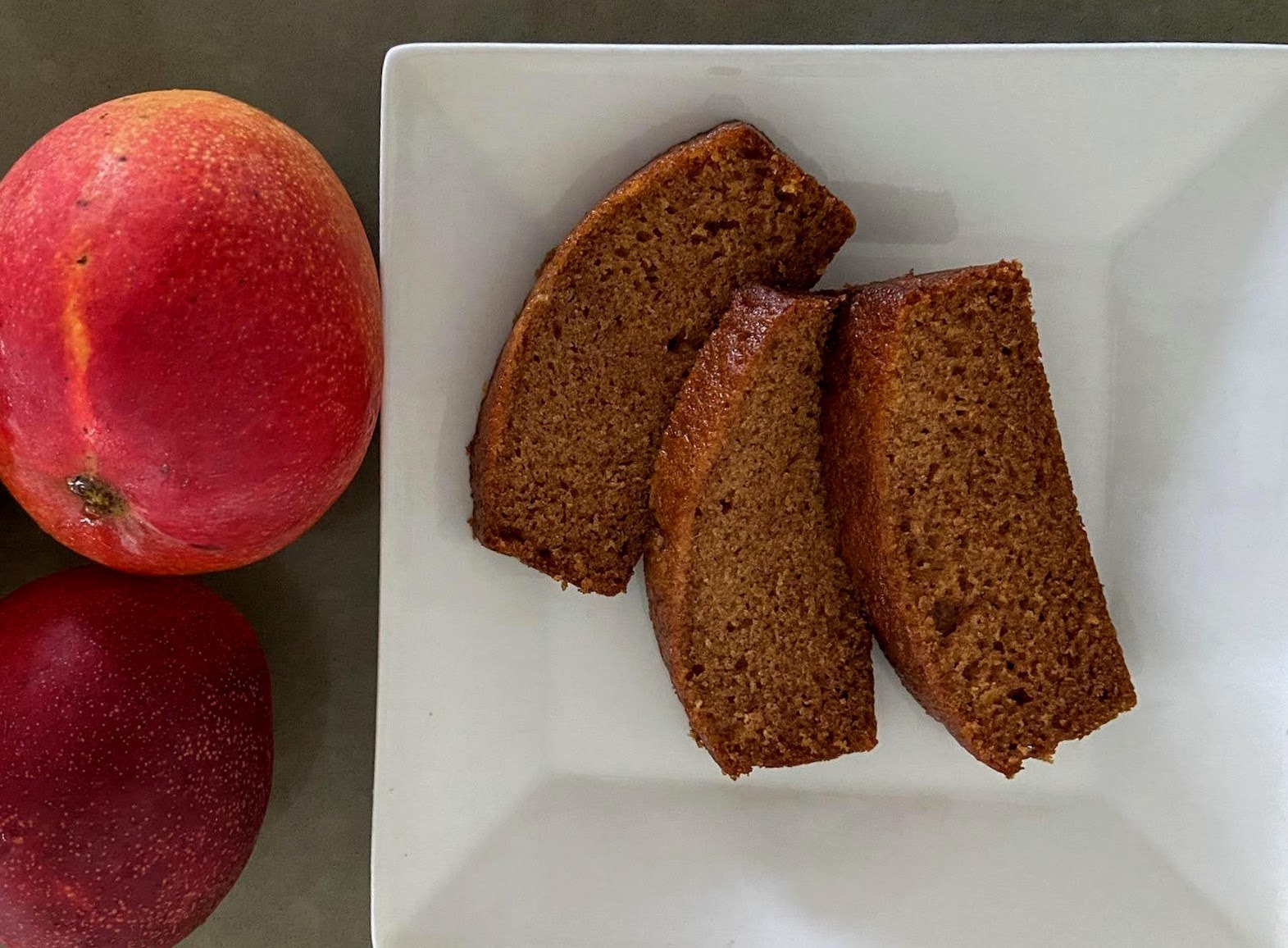Grove Farm Newsletter - July 2021 Edition
Perpetuating the Art of Weaving with Kauaʻi Practitioner, Eugene “Onio” Punzal

A natural storyteller – articulate, engaging, and full of life – Eugene “Onio” Punzal generously shared his moʻolelo. He starts by saying, “I was named Eugene after Eugenio Maria Giuseppe Giovanni Pacelli.” And before you can begin to wonder “who?,” you learn that Pacelli was the Catholic Pope at the time he was born. Eugene’s nickname “Onio” was shortened on the playground but was derived from “Oni-ong,” which is what his dad called him. Quick-witted and always speaking at a fast clip, his story begins with his days working at the Coco Palms Hotel to his wanting to perpetuate the art of weaving to the next generation.
Before and after his three years spent in Japan earning a degree in the Japanese language at Tenri University, Onio worked at the famous Coco Palms Hotel in Wailua. He relived the Coco Palms Hotel torch lighting ceremony with incredible clarity – describing the silent darkness, mimicking the drumbeat, then recounting the lighting of about 90 torches. He was a torch runner, and you can almost envision the pageantry as it unfolded. He played many roles at Coco Palms and spoke with regard of Grace Guslander, Mele Ana Soong, Sarah Sheldon, Big John Kauo, Larry Rivera, and Andrew Kane – who were all part of the famous Coco Palms dinner and show.
He is a master weaver – particularly of coconut fronds – and also works with lauhala. Onio learned the art of weaving coconut leaves from lifeguard George Miki. Why he does what he does is his strong desire to perpetuate the culture – “teaching our youth, so these practices live on.”
View his story here.
Summertime Means Mangos!

In plantation camps, mango trees were commonly planted for its sweet and refreshing fruit. It’s no secret that the best mango on Kauaʻi comes from the westside, where it’s hot and dry. There are many varieties of mango, such as the Hayden, Common, and Raposa, but the most popular species back then was the small, sweet, and plentiful Number 9.
My great grandfather, Emilio Yanos, planted this mango tree (pictured) in the 1950s. He was born in Ilocos Norte, Phillipines, and worked as a truck driver for Kekaha Sugar. He was known as Apo Man and lived past 100 years old! Apo, in Ilocano, is a term used out of respect for elders. He wasn’t very tall in stature, but he was resourceful and engineered to suit his lifestyle. He built a storage shed and cookhouse that is less than six feet tall. His most innovative accomplishment was the shortened Number 9 mango trees in his backyard.
Mango trees can reach heights of 100 feet if given a chance. Knowing this, Apo Man hung and tied beer bottles filled with water once the top of the tree was out of reach for his wire basket picker. The tree slowly learned to grow wide instead of tall. Nowadays, I am using this same approach to train bougainvillea shrubs to grow wide, instead of high! He custom made braces out of old ladders and used leverage to support the added weight of the branches. He even added plyboard and other weights directly in the center of the tree to further encourage wide growth.

Apo Man’s trees are unique. Mango trees usually fruit in May and hit peak season during the summer months. These trees are the only mango trees I know that start to flower in the winter and produce fruit in mid-January. Picking the fruit is a fun time! For most people, mango is picked overhead. For this tree, most fruit hang from a foot off the ground to about waist-high, making it easier and safer to harvest.
When my Apo Man was alive, he had soursop, moringa, and lychee trees around his yard. When the mango tree was producing lots of fruit in the summer, he would let the kids in the neighborhood pick the fruit for their families. Mango, and any other fruit or flower in his yard, was never sold. Apo man believed the more you give, the more you will always have. Once you start selling mango, that’s when the tree is going to stop giving fruit. This is the way we were all taught, and his teachings will carry on with what he instilled in us all those years ago.
Moʻolelo submitted by Beau Acoba, Great Grandson of Emilio Yanos
Ono Mango Bread Recipe
With mango in season around the island, here’s a mango bread recipe in case you have some overripe ones.
Ingredients:
| 2 cups | flour |
| 2 tsp | baking soda |
| 2 tsp | cinnamon |
| ½ tsp | salt |
| 1 ½ tsp | sugar |
| 1 cup | Wesson oil |
| 1 tsp | vanilla |
| 3 | eggs |
| 1 jigger | brandy |
| 2 cups | mango, diced |
Instructions:
- Sift dry ingredients together first
- Add remaining ingredients
- Pour into two loaf pans and let stand for 20 mins
- Bake at 350 degrees for one hour

